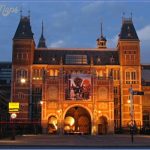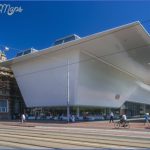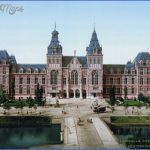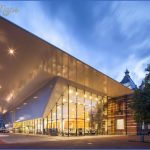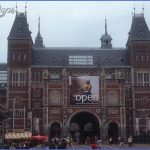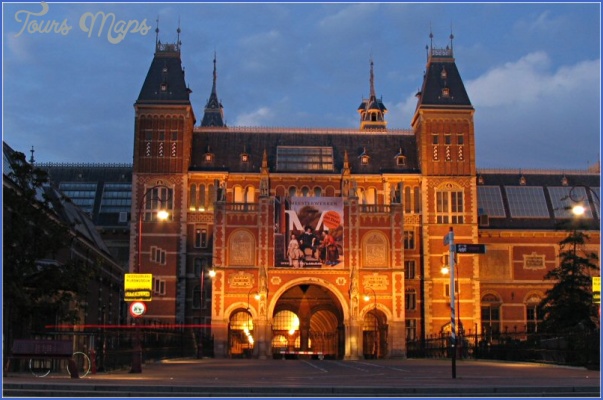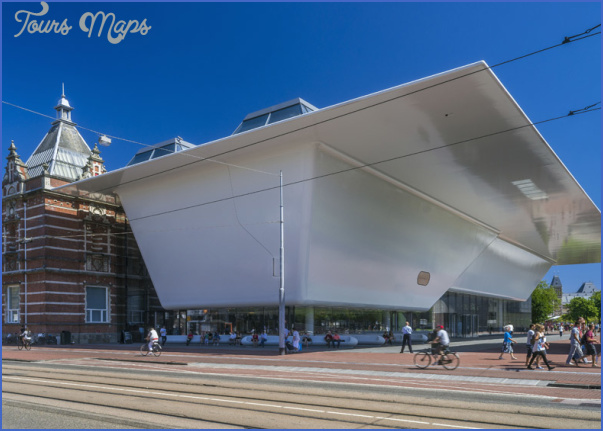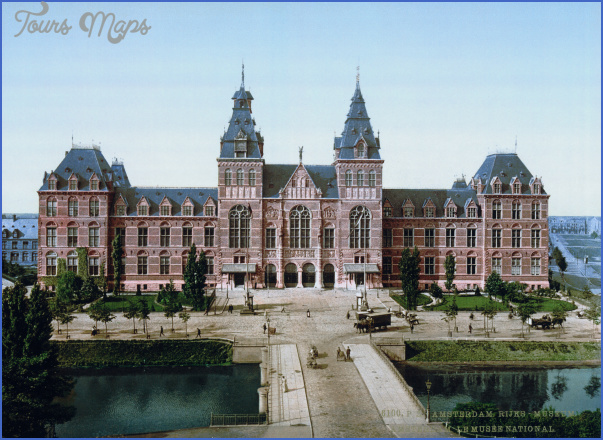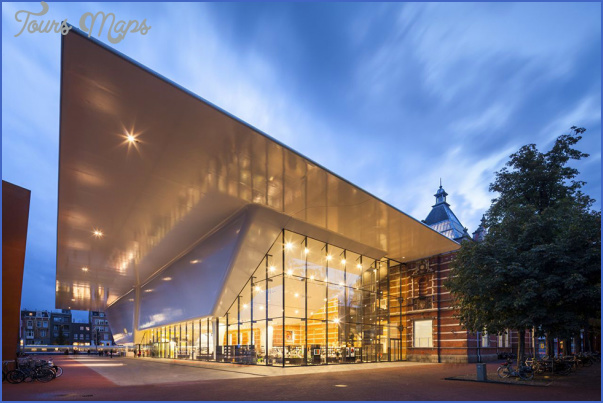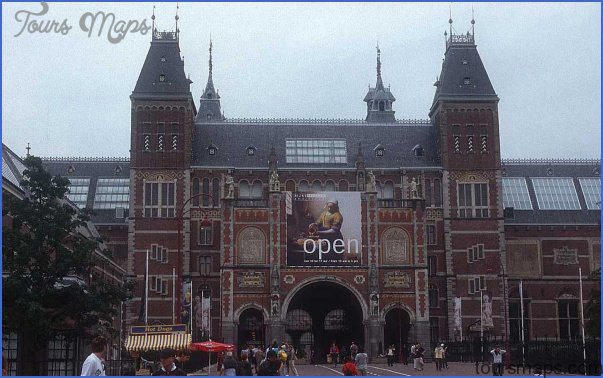MUSEUM AMSTELKRING ONS’ LIEVE HEER OP SOLDER (OUR LORD IN THE ATTIC). A secret enclave of virtue and piety hides in this 17th-century secret church, built during the Alteration for Catholics who were forbidden to practice their faith. Amstelkring, which once masqueraded as a shop front, contains a stunning little chapel which spans the attics of three adjacent buildings. (Oudezijds Voorburgwal 40. s624 66 04; www.museumamstelkring.nl. Open M-Sa 10am-5pm, Su and holidays l-5pm. ‚6, students ‚4.50, under-18 ‚1.)
THE VICES. If it’s weed that interests you, far and away your best bet is the staggeringly informative UCannabis College, Oudezijds Achterburgwal 124. The center for higher education offers info on everything from the uses of medicinal marijuana to facts about the War on Drugs to the creative applications of industrial hemp. For a curated taste of the seaminess that runs down Amsterdam’s underbelly, your best bet is to head to the Amsterdam Sex Museum, Damrak 18, less than a five-minute walk from Centraal Station. The low admission fee won’t leave you feeling burned if you find that walls plastered with pictures of bestiality and S&M are not your thing. (Cannabis College open daily 1 lam-7pm. Free. Sex Museum open daily 10am-l 1:30pm. ‚2.50.)
NIEUWE KERK. The extravagant 15th-century brick-red new church at the heart of the Nieuwe Zijd now serves a triple role as religious edifice, historical monument, and art museum. Through 2004, the originally Catholic church will open its doors to rotating exhibits from the Stedelijk collection’s depository while the Stedelijk is being renovated. (Adjacent to Dam Sq. beside Koninklijk Palace. n638 69 09; www.nieuwekerk.nl. Open M-W, F, and Su, 10am-6pm; Th lOam-lOpm. Organ recitals June-Sept. Su 8pm and Th 12:30pm. ‚8, ages 6-15 and seniors ‚6.)
AMSTERDAM HISTORISCH MUSEUM. The Amsterdam Historical Museum offers an introduction to Amsterdam’s historical development by way of medieval manuscripts, Baroque paintings, and multimedia displays. Be sure to catch one of the Historical Museum’s hidden surprises: In the covered passageway between the museum and Begijnhof there is an extensive collection of large 17th-century paintings of Amsterdam’s civic guards. (Kalverstr. 92, Sint Luciensteeg 27, and Nieuwezijds Voorburgwal 357. s523 18 22; www.ahm.nl. Open M-F 10am-5pm, Sa-Su llam-5pm; closed Apr. 30. ‚6, seniors ‚4.50, ages 6-16 ‚3.)
AMSTERDAMS CENTRUM VOOR FOTOGRAFIE. The Amsterdam Center for Photography is a brimming forum that emphasizes the talents of young photographers and holds five- to six-week-long exhibitions by up-and-coming, mainly Dutch, artists. The level of talent and breadth of subject matter displayed is highly variable, but there are always some remarkable and vibrant pieces throughout the three floors of open, sunny display rooms. Gallerie 39, Bethanienstr. 39, is a newly opened branch of this museum and displays additional photographs by the same artists. (Bethanienstr. 9. 622 48 99. Open IV-Sa l-6pm. Closed July to mid-Aug.)
BEURS VAN BERLAGE. Architecture buffs will salivate over this old stock-and-commodities exchange, designed by Hendrik van Berlage in 1903. While the restored interior chambers part of an ongoing project to restore spaces to their original states provide a fascinating look at the workings of the Dutch economy at the turn of the century, the highlight of the museum may well be the vertiginous ascent up a rickety staircase to the top of the clock tower. Those gutsy enough to brave the climb will be rewarded with a sweeping 360-degree view of the city. The interior space is a gallery featuring displays that focus on architectural models, paintings, and photographs. (Damrak 217, near Dam Sq. 530 41 41; www.beursvan-berlage.nl. Open Su and Tu-Sa llam-5pm. ‚5, students ‚3. Under-12 free.)
ANNE FRANK HUIS. A visit to the Anne Frank House is a must for everyone, whether or not you’ve read the famous diary. The museum chronicles the two years the Frank family and four other Jews spent hiding in the annex of this warehouse on the Prinsengr. The rooms are no longer furnished, but personal objects in display cases and text panels with excerpts from the diary bring the story of the eight inhabitants to life, and the magazine clippings and photos that Anne used to decorate her room still hang on the wall. Footage of interviews with Otto Frank, Miep Gies (who supplied the family with food and other necessities), and childhood friends of Anne provide further information and details. Arrive before 10am and after 4pm for the shortest lines. (Prinsengr. 267. 556 71 00; www.annefrank.nl. Open Apr.-Aug. daily 9am-9pm; Sept.-Mar. daily 9am-7pm. Closed on Yom Kippur. Last admission 30min. before closing. ‚6.50, ages 10-17 ‚3. Under-10 free.)
BIJBELS MUSEUM. The Bible Museum presents info both on the contents and history of the Bible and on the cultural context in which it was written. The collection includes the first Bible ever printed in The Netherlands. (Herengr. 366-368. s624 24 36; www.bijbelsmuseum.nl. Open M-Sa 10am-5pm, Su 11am- 5pm. ‚5, children ‚2.50.)
ELECTRIC LADYLAND: THE FIRST MUSEUM OF FLUORESCENT ART. Endearingly eccentric owner Nick Padalino has collected a singularly impressive assortment of fluorescent objects. These include gorgeous rocks that glow green in black light and an array of everyday objects that reveal hidden shades. Visitors are encouraged to dive into the interactive space and play with the many switches and buttons that turn various lights on and off. (2e Leliedwarsstr. 5. s420 37 76; www.electric-lady-land.com. Open Tu-Sa l-6pm. ‚5. Under-12 free.)
STEDELIJK MUSEUM BUREAU AMSTERDAM. This acjunct of the Stedelijk (see below) devotes itself to exhibiting the newest in Amsterdam art. A pure white space made light and breezy by a vaulted glass ceiling, the museum bureau is something of a testing ground for avant-garde artists and material designers. The temporary shows range from rather traditional forms of painting and sculpture to outrageous attempts at installation, as well as displays of furniture and fashion design. (Rozenstr. 59. s422 04 71; www.smba.nl. Open Su and Tu-Sa llam-5pm. Free.)
HUIS MARSEILLE. The first locale in the city to curate photography exhibits on a permanent basis, the Marseille is a must for shutterbugs. Every three months, a handful of new displays grace this 1665 canal house only a few prints are selected from each artist, but their works are invariably expressive, informative, and thoughtfully arranged. The museum also has its own permanent collection of contemporary works by celebrated international photographers whose pieces also branch out into other forms of visual art. (Keizersgrt. 401. s531 89 89; www.huismarseille.nl. Open in summer Tu-W llam-5pm, Th-F llam-8pm; off-season Su and Tu-Sa llam-5pm. ‚2.80, students ‚1.40. Under-12 free.)
VAN GOGH MUSEUM. This architecturally breathtaking museum houses the largest collection of van Goghs in the world and a diverse group of 19th-century paintings by contemporaries like Gaugin and friend Emile Bernard. Don’t miss the substantial collection of Impressionist, post-impressionist, Realist, and Symbolist art. (Paulus Potterstr. 7. n570 52 52; www.vangoghmuseum.nl. Open daily 10am-6pm; ticket office closes 5:30pm. ‚9, ages 13-17 ‚2.50. Under-12 free. Audio guides ‚4.)
STEDELIJK MUSEUM OF MODERN ART. The Stedelijk has amassed a world-class collection that is on par with the Tate Modem or the MoMA. The museum is slated to close in January 2004 for up to three years of renovations, though this repair work may be delayed. If it does undergo renovations, the museum will exhibit selections from its collection in venues around Amsterdam, like the CoBrA Museum and the Nieuwe Kerk (785); check the website for more up-to-date information. (Paulus Potterstr. 13. s573 27 45; recorded info 573 29 11; www.stedelijk.nl. Open daily llam-5pm. ‚7; ages 7-16, over-65 and groups over 15 ‚3.50. Under-7 free.)
The State Museum has long been known as Amsterdam’s preeminent destination for art from the Dutch Golden Age. Even though the main building of the museum will close for renovations in December 2003, the Rijksmuseum is still a mandatory Amsterdam excursion. During restoration, the smaller Philips Wing will remain open to show masterpieces of 17th-century painting, including works by Frans Hals, Rembrandt van Rijn, Jan Steen, and Johannes Vermeer. Unfortunately, while the museum undergoes renovation, much of the collection will not be on display, but you may be able to catch a glimpse of some of the museum’s holdings on loan at venues around the city. For details on the locations that will temporarily hold the Rijksmuseum’s collection, check the website. (Stadhouderskade 42. s674 70 00; www.rijksmuseum.nl. Open daily 10am-5pm. ‚8.50. Under-18 free. Audio guides ‚3.50.)
FILMMUSEUM. Although the Filmmuseum is dedicated to the celebration and preservation of film, don’t come here expecting to find mundane museum exhibits: Most visitors come to see movies. As the national center for cinema in The Netherlands, the museum’s collection holds 35,000 titles stretching back to 1898. In addition to screening several films a day, they maintain an information center at 69 Vondelstr. (across the path from the entrance), which houses the largest collection of books and periodicals on film in The Netherlands, many of them in English. You can do film research in the non-circulating archives or on the computerized databases; the staff will help with any requests. (Vondelpark 3, between the Roemer Visscherstr. and Vondelstr. entrances. 589 14 00; www.filmmuseum.nl. Free.)
CENTRAL CANAL RING DE APPEL. This contemporary art museum houses a brilliant permanent collection and welcomes compelling, cutting-edge temporary exhibits that make even the Stedelijk look old-fashioned. (Nieuwe Spiegelstr. 10. s625 56 51; www.deappel.nl. Open Su and Tu-Sa llam-6pm. ‚2.)
FOAM PHOTOGRAPHY MUSEUM. Inside a traditional canal house, Foam stages a fearless exploration of modem photography. Every genre of the photographed image is fair game from the purely aesthetic to the overtly political, from fashion photography to historical exhibits. (Keizersgr. 609. s551 65 00; www.foam.nl. Open daily 10am-5pm. ‚5, students with ID ‚4. Cafe open Su and W-Sa 10am-5pm.)
MUSEUM WILLET-HOLTHUYSEN. Walk into life in the Golden Age. Run by the Amsterdam Historisch Museum, this 17th-century canal house has been preserved as a museum with 18th-century furnishings, so you can see how the wealthy in Amsterdam lived over 300 years ago. In 1895, Sandrina Holthuysen donated the family home she shared with her collector husband Abraham Willet. Now the marble and gilt mansion has been redone in a Baroque, early 18th-century style, with gilt-edged walls, glittering chandeliers, family portraits, Rococo furnishings, and other signs of conspicuous consumption, including Abraham’s collection of fine porcelain, crystal, and silver. The French Neoclassical garden out back remains as finely manicured as it was in the Golden Age. (Herengrt. 605. s 523 18 70; www.ahm.nl. Open M-F 10am-5pm, Sa-Su llam-5pm. ‚4, over-65 ‚3, ages 6-16 ‚2. Under-6 free.)
TORTURE MUSEUM. Just about every means of medieval torture imaginable is displayed at this appropriately dark, claustrophobic museum. Though the racks, guillotines, and thumbscrews lack much context beyond a glib explanation of their use, the sheer intricacy of the darker side of European feudal history is worth a look. (Singel 449. s320 66 42. Open daily lOam-llpm. ‚5, children ‚3.50.)
JOODS HISTORISCH MUSEUM. In the heart of Amsterdam’s traditional Jewish neighborhood, the Jewish Historical Museum aims to celebrate Jewish culture and document the religion’s cultural legacy. Through exhibits by Jewish artists and galleries of historically significant Judaica, the museum presents The Netherlands’s most comprehensive picture of Jewish life photographs, religious artifacts, texts, artwork, and traditional clothing remain in the permanent collection. (Jonas Daniel Meijerpl. 2-4. 626 99 45; www.jhm.nl. Open daily llam-5pm. Closed Yom Kippur. ‚6.50, seniors and ISIC holders ‚4, ages 13-18 ‚3, ages 6-12 ‚2. Audio TourCl.)
MUSEUM HET REMBRANDT. Dutch master Rembrandt van Rijn’s house at Water-loopi. is the home of the artist’s impressive collection of 250 etchings. See the inhumanly claustrophobic box-bed in which Rembrandt slept and tour the studio in which he mentored promising painters. (Jodenbreestr. 4. &520 04 00; www.rem-brandthuis.nl. Open M-Sa 10am-5pm, Su l-5pm. ‚7, with ISIC ‚5. Under-6 free.)
TROPENMUSEUM (MUSEUM OF THE TROPICS). The Tropenmuseum takes guests on an anthropological tour of Africa, Asia, the Caribbean, Latin America, and Oceania with ancient artifacts, contemporary objects, and religious pieces. Sponsored by the Dutch Royal Institute of the Tropics, the museum is situated in one of Amsterdam’s most awe-inspiring modem buildings a massive, arched dome slotted with skylights. Most of the works on display were obtained through Dutch colonial expansion; others are contemporary ethnographic studies. (Linnae-usstr. 2. s568 82 15; www.tropenmuseum.nl. Open daily 10am-5pm. ‚6.80, students and seniors ‚4.50, ages 6-17 ‚3.40. Under-6 free.)
VERZETSMUSEUM (DUTCH RESISTANCE MUSEUM). Though the Nazi-German militaiy quickly overran Dutch armed forces in May, 1940, The Netherlands maintained an active resistance throughout WWII. The Resistance Museum focuses on the members of this secret army, providing visitors with the details of their lives and struggles. Model streets, buildings, and tape-recorded radio reports recreate the rebels’ experiences from smuggling food to issuing anti-propaganda on a printing press. (Plantage Kerklaan 61. 620 25 35; www.verzetsmuseum.org. Open Tu-F 10am-5pm, Sa-M noon-5pm, public holidays noon-5pm. ‚4.50, ages 7-15 ‚2.50.)
NEMO (NEW METROPOLIS). The green hull-like structure rising out of the water is NEMO, a science and creative exploration center geared toward children ages 6-16 and thir accompanying adults. The structure, Renzo Piano’s modem homage to The Netherlands’s seafaring past, spans four stories and is littered with science exhibits just begging to be poked at, jumped on, and experimented with. Don’t miss the spectacular view of the shipyard and the historic city; on the eastern side, a staircase traverses the structure’s slanted roof. (Oost-erdok 2. East of Centraal Station inon the Oosterdok. (0900) 919 11 00, ‚0.35 per min.; www.e-NEM0.nl. Open Su and Tu-Sa 10am-5pm. ‚10, students ‚6. Under-4 free.)
SCHEEPVAARTMUSEUM (MARITIME MUSEUM). For lovers of the sea, the vast three-tiered Maritime Museum leaves no shell unturned in its exploration of The Netherlands’s sea-faring history. In addition to the 70 real vessels on display, multiple model ships are spread throughout, including the spectacular Dutch East Indiaman Den Ary, a ship that seems to have sailed straight out of the mythical age of pirates and mermaids. Don’t miss the full-size replica of the Dutch East Indian ship Amsterdam, parked right in front of the museum. On weekends, actors re-create life on board this ship. (Kattenburgerpl. 1. Follow signs past NEMO. 523 22 22; www.scheepvaartmuseum.nl. Open late-Sept. to early-June. Su and Tu-Sa 10am-5pm; mid-June to mid-Sept. daily 10am-5pm. ‚7, seniors ‚6, students ‚5.25, children 6-18 ‚4.)
MUSEUMS OF AMSTERDAM Photo Gallery
Maybe You Like Them Too
- Explore Pulau Sebang Malaysia with this Detailed Map
- Explore Southgate, Michigan with this detailed map
- Explore Les Accates, France with this Detailed Map
- Explore Góra Kalwaria, Poland with this detailed map
- Explore Gumdag, Turkmenistan with this detailed map

